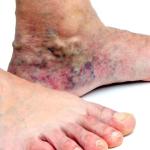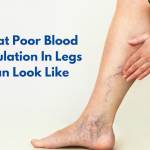
Understanding the Different Types of Deep Vein Thrombosis (DVT)
Deep Vein Thrombosis (DVT) is a serious condition where a blood clot forms in one of the deep veins, usually in the legs. While often discussed as a singular condition, DVT can manifest in different ways, depending on the location and characteristics of the clot. Understanding these distinctions is crucial for accurate diagnosis and effective treatment.
Let’s explore into the various types of DVT:
1. Proximal DVT
This is arguably the most concerning type of DVT due to its higher risk of complications. Proximal DVT refers to blood clots that form in the deep veins above the knee. These include:
- Popliteal Vein DVT: A clot in the popliteal vein, located behind the knee.
- Femoral Vein DVT: A clot in the femoral vein, running through the thigh.
- Iliac Vein DVT: A clot in the iliac veins, located in the pelvis.
- Inferior Vena Cava (IVC) DVT: Though less common as a primary site, clots can extend into or originate in the IVC, the largest vein in the body, which carries deoxygenated blood from the lower body to the heart.
Why is proximal DVT more dangerous? Clots in these larger, more central veins are at a greater risk of breaking off and traveling to the lungs, causing a pulmonary embolism (PE), a potentially life-threatening condition.
2. Distal DVT (Calf DVT)
Distal DVT refers to blood clots that form in the deep veins below the knee, specifically in the calf. These include:
- Peroneal Vein DVT: Clots in the peroneal veins, located on the outer side of the calf.
- Posterior Tibial Vein DVT: Clots in the posterior tibial veins, running down the back of the calf.
- Anterior Tibial Vein DVT: Clots in the anterior tibial veins, located on the front of the calf.
Is distal DVT less serious? While generally considered to have a lower risk of causing a PE compared to proximal DVT, distal clots can still extend into proximal veins over time, increasing the risk. Therefore, they still require careful monitoring and treatment.
3. Upper Extremity DVT (UEDVT)
While most commonly associated with the legs, DVT can also occur in the deep veins of the arms, shoulders, and neck. This is known as Upper Extremity DVT (UEDVT). Common sites include:
- Subclavian Vein DVT: A clot in the subclavian vein, located under the collarbone.
- Axillary Vein DVT: A clot in the axillary vein, located in the armpit.
- Brachial Vein DVT: A clot in the brachial vein, running through the upper arm.
What causes UEDVT? UEDVT often has different risk factors than lower extremity DVT. It’s frequently associated with:
- Central venous catheters: Such as PICC lines or central lines used for medication administration.
- Repetitive arm movements or compression: Seen in athletes (e.g., “Paget-Schroetter syndrome” or “effort thrombosis”).
- Cancer or certain medical conditions.
UEDVT can also lead to PE, though the risk is generally considered lower than with proximal lower extremity DVT.
4. Superficial Vein Thrombophlebitis (SVT) vs. DVT
It’s important to distinguish DVT from superficial vein thrombophlebitis (SVT). SVT involves a blood clot in a superficial vein, which is closer to the skin’s surface. While SVT can be painful and cause inflammation, it is generally less serious than DVT because the risk of a clot traveling to the lungs is significantly lower. However, in some cases, SVT can extend into a deep vein, or a DVT may coexist with SVT, so medical evaluation is always recommended.
Takeaways about Different Types of DVT
Regardless of the type, DVT is a medical emergency that requires prompt diagnosis and treatment. Symptoms can include:
- Swelling in the affected limb
- Pain or tenderness
- Warmth or redness of the skin
- Visible surface veins
If you experience any of these symptoms, especially if accompanied by shortness of breath or chest pain (which could indicate a PE), seek immediate medical attention. Early intervention with anticoagulants (blood thinners) and other treatments can prevent serious complications and improve outcomes.
Understanding the different types of DVT helps healthcare professionals tailor treatment plans and provides patients with a clearer picture of their condition. Stay informed, listen to your body, and don’t hesitate to seek medical help if you suspect DVT.





